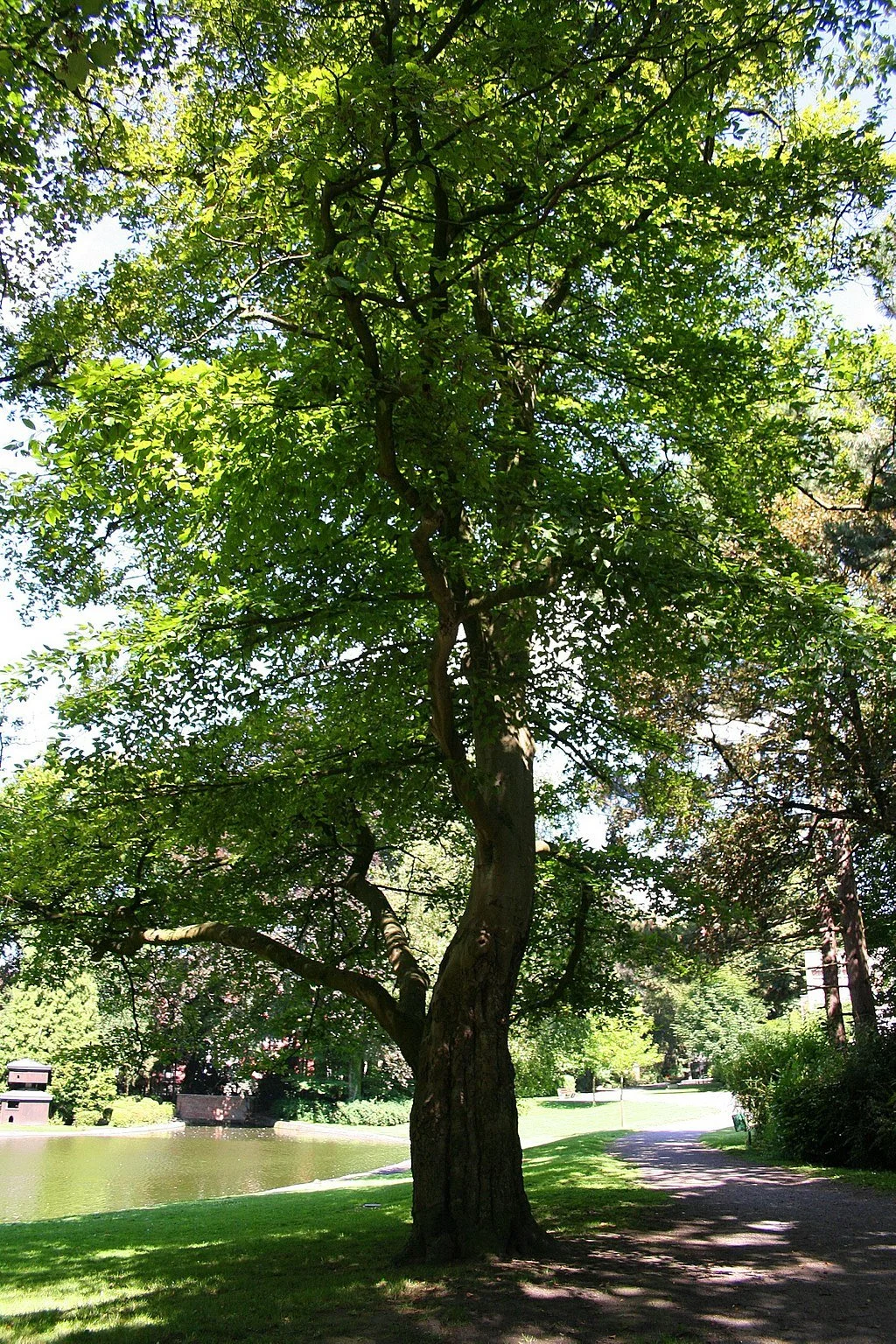
Beech tree disease imperils forest ecosystem
American beech tree
— Photo by Jean-Pol GRANDMONT
From ecoRI News (ecori.org) article by Mike Freeman
Beech leaf disease, which has devastated northern hardwood forests since its discovery in Ohio in 2012, has spread throughout Rhode Island’s beech trees.
“It would change the whole forest ecosystem if they go,” said Heather Faubert, director of the University of Rhode Island’s Plant Protection Clinic. “We know what’s infected them but don’t know yet how it spreads, only that it spreads very quickly. It was first identified in Ashaway in 2020 and is now statewide.”
The disease is infecting beech trees in all New England states except Vermont, and was first detected in Connecticut in 2019.
Faubert’s general description tracks the terrible template that has wiped out or is en route to wiping out several native North American tree species. Details differ, but the plot never changes: People notice dying trees, a cause is identified, swaths of forest succumb as more becomes known, then to various effects preventative, palliative, or restorative measures are taken, often in combination. American chestnut exists on life support, American elm is greatly diminished, and currently eastern hemlock, the entire ash genus, and now American beech are all in dire peril.
As Faubert noted, what exactly causes beech leaf disease (BLD) and how it spreads are currently unknown, though the critical vector is Litylenchus crenatae mccannii, a nearly microscopic nematode, or worm, that feeds on beech leaves.
To read the whole article, please hit this link.
Disease threatens beech trees
North American beech tree in the fall
From ecoRI News (ecori.org)
The Rhode Island Department of Environmental Management (DEM) is asking residents to monitor beech trees for signs of leaf damage from beech leaf disease (BLD). Early symptoms include dark striping on a tree’s leaves parallel to the leaf veins and are best seen by looking upward into a backlit canopy.
The dark striping is caused by thickening of the leaf. Lighter, chlorotic striping may also occur. Both fully mature and young, emerging leaves show symptoms. Eventually, the affected foliage withers, dries, and yellows. Drastic leaf loss occurs for heavily symptomatic leaves during the growing season and may appear as early as June, while asymptomatic and mildly symptomatic leaves show no or minimal leaf loss. Bud and leaf production also are impacted.
BLD was detected in the Ashaway area of Hopkinton and in coastal Massachusetts this year, according to DEM. Before these findings, the disease was only known to be in Ohio, Pennsylvania, New York, and Connecticut. The disease is caused by a kind of nematode, microscopic worms that are the most numerically abundant animals on the planet.
While there are good species of nematodes, the BLD nematodes cause leaf damage that leads to tree decline and death. At this time, they are known to only affect American, European, and Oriental beech species. Currently, there is no defined treatment, as nematodes are difficult to control in the forest environment. Research is underway to identify possible treatments for landscape trees.
All ages and size of beech are affected, although the rate of decline can vary based on tree size. In larger trees, disease progression is slower, beginning in the lower branches of the tree and moving upward. The disease also appears to spread faster between beech trees that are growing in clone clusters, as it can spread through their connected root systems. Most mortality occurs in saplings within two to five years. Where established, BLD mortality of sapling-sized trees can reach more than 90 percent, according to DEM.
The state agency encourages homeowners and forest landowners to monitor their beech trees and report any suspected cases of BLD to DEM’s Invasive Species Sighting Report.

